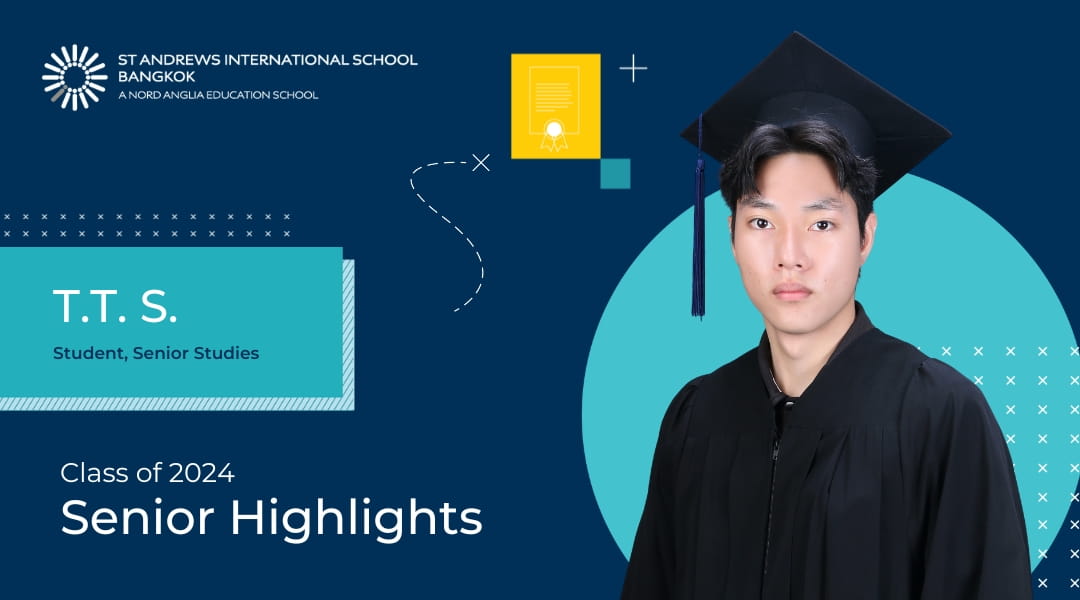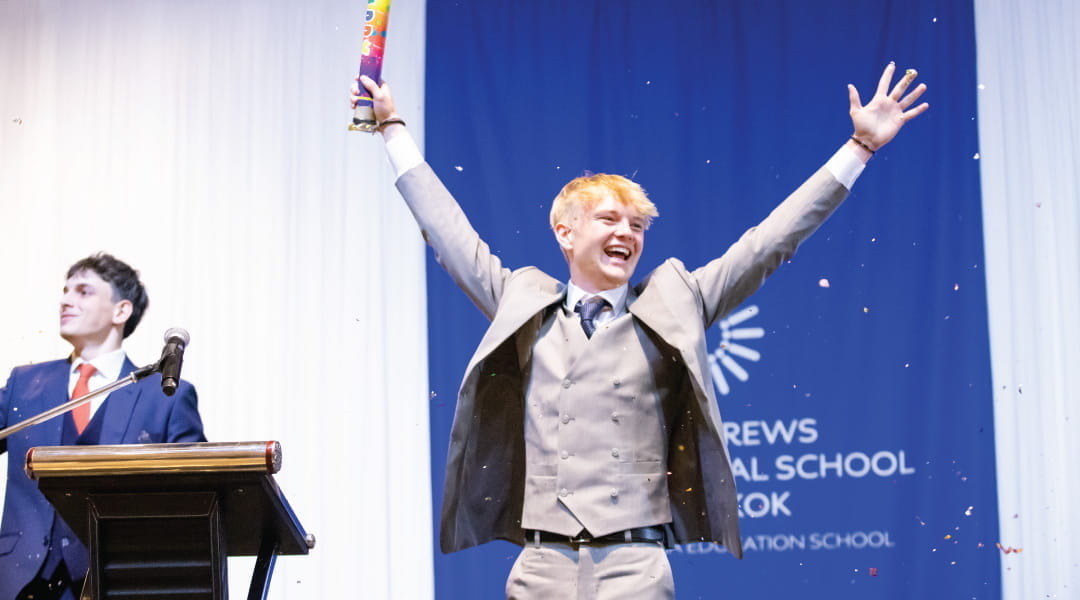At St Andrews International School Bangkok, our learning environment is designed for each student to shine in their areas of strength. Take one of our young talents in Design Technology, T.T., who certainly has a bright future ahead of him. We sat and had a talk about his experience going through the IB Diploma Programme, his passion for architecture, and his plans for university upon graduation.
What have you learnt from Senior Studies at St Andrews?
The two most important things I learnt from Senior Studies at St Andrews are time management and independent learning skills. As it is mentioned in the IB learner profile, it requires me and every student to be able to work independently, not only inside the classroom but on my own time as well.
What are your plans for university or after graduation?
I plan to study architecture in either the UK or Australia. In the case, I get a conditional offer from Bartlett School of Architecture, University College London (UCL), and my final score meets the offer, I would go there. Bartlett is currently ranked as the best architectural school in the world and it would be a fantastic opportunity for me to study there. Personally, I like Bartlett’s programme – after looking into it, I can see that it will give me the opportunity to explore and develop my projects and focus less on the theory part.
In the case I don’t get the offer, or my score does not meet, my second choice would be RMIT (Royal Melbourne Institute of Technology) in Australia.
Favourite memory? What will you miss the most about St Andrews?
My favourite memory from St Andrews is of course enjoying time with my friends. I joined St Andrews in Year 8 and, since then, I have always been with the same friend group, so I will miss them a lot.
Another thing that I will miss is the DT class. DT (Design & Technology) is my favourite subject. Although during the IB Diploma it got very challenging, and I did spend one too many late nights on projects, it was very much worth it. DT is the only subject that allowed me to fully express my skills and creativity. And, of course, it supports my future as an architecture student.


Some of T.T.’s designs shown above
Any advice for Year 12s or students going into IB?
As everyone knows, the IB Diploma Programme is a very tough course, especially in Term 1 of Year 13. During this time, you will have lots of deadlines – IAs (Internal Assessments); the Extended Essay, and TOK (Theory of Knowledge). Also, if you are applying for a design, architecture, or art major for your university, they’ll require you to submit a portfolio.
For the US, the UK, and Europe, the deadlines for portfolio submissions would be around December to January, which means you will have to work on them in Term 1. For those who have to do these types of portfolios, you will have almost twice as much work as some other IB students. So, my only recommendation would be that you start this work early. Spend as much time as possible on the portfolio when you are still in Year 12 and during school breaks, because you will be very busy in Year 13.
What project are you most proud of from your portfolio and why?
The project that I am most proud of is HIDEAWAY, which contains a full-process development of an infill architecture.

I had planned to design an infill architecture, since it is a suitable concept in the urban context of Bangkok. I picked this specific site because the two buildings next to it are very contrasting to each other. One is a traditional townhouse, while the other is a luxury hotel.
The function of the building is a residence and bar in one building, because I wanted to emphasise the contrast between a very private and very public space. I also wanted to somehow reflect its historical context; the Japanese army was hiding in this area from the Thai government during WWII and, similarly, the bar function is designed to be hidden from the outside, as it is in a restricted area.
I am most proud of this project because in its development, I demonstrated every skill that I had learnt from past projects. Also, I like designs that take many aspects into consideration, making this a very contextual project.




.jpg?h=600&iar=0&w=1080&rev=eb0f0b0675c546e48d65e433eedebfca&hash=00E6516F66C028FA783599C0D4DDC0AA)



